The 1980s were a transformative decade, leaving an indelible mark on popular culture, music, fashion, technology, and politics.
This period was characterized by vibrant colors, groundbreaking music videos, and significant political events.
Understanding the 1980s helps us appreciate the cultural movements and innovations that shape our modern world.
From the rise of new wave music to the fall of the Berlin Wall. It was an era defined by its exuberant style, iconic movies, and revolutionary music videos.
This decade’s influence is still evident in today’s pop culture, fashion, and technological advancements.
Many of the trends, technologies, and cultural shifts that began in this decade continue to shape our world today.
Music videos revolutionized how we consume music, fashion trends like shoulder pads and neon colors are making a comeback, and technological advancements laid the groundwork for the digital age.
In this article, I will discuss the key elements that made the 1980s unforgettable and explore how this iconic decade continues to influence contemporary culture.
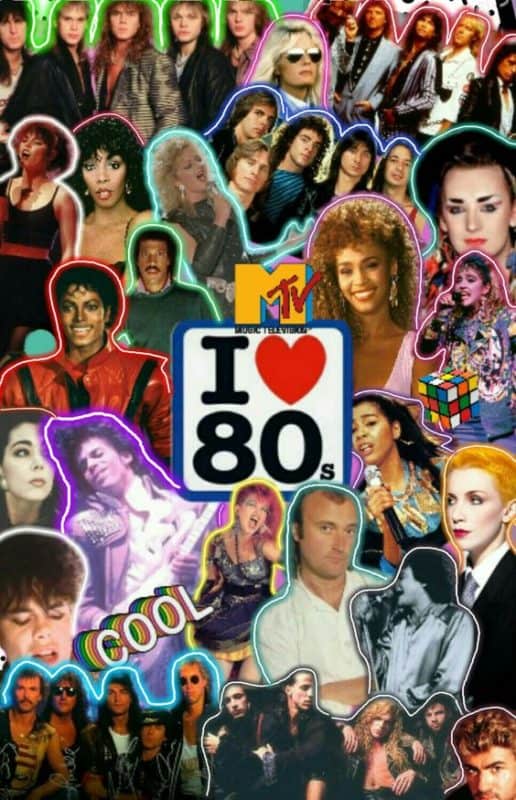
Credits: @mauricioreyesvi / Pinterest
Key Takeaway
- The 1980s were a transformative decade that greatly influenced modern pop culture, fashion, music, technology, and politics. Key cultural phenomena include iconic music videos, bold fashion trends, and groundbreaking movies.
- Prominent artists such as Michael Jackson, Whitney Houston, and Madonna defined the era with their innovative music and style. MTV and music videos revolutionized how music was consumed and visualized.
- The 1980s saw the advent of personal computers, the rise of the Sony Walkman, and the expansion of cable television, laying the groundwork for today’s digital age and transforming how people access information and entertainment.
- Significant events like Ronald Reagan’s presidency, the fall of the Berlin Wall, and the rise of new political and social movements shaped the global landscape, leading to lasting impacts on international relations and social dynamics.
Music and Icons
Michael Jackson

Credits: @meredith777 / Pinterest
Michael Jackson, often referred to as the King of Pop, was a towering figure in the music industry during the 1980s.
His unparalleled talent, innovative music videos, and mesmerizing performances set new standards for artists worldwide.
Jackson’s 1982 album Thriller remains the best-selling album of all time. Its title track, accompanied by a groundbreaking music video, revolutionized the music industry.
His influence extended beyond music. His iconic style, including the famous single glove, red leather jacket, and fedora hat, shaped fashion trends.
Whitney Houston
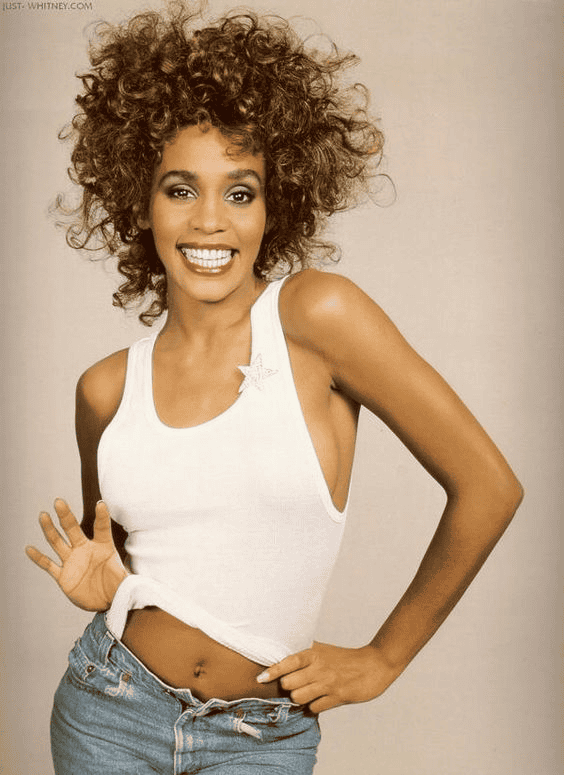
Credits: @soberjulie / Pinterest
Whitney Houston’s powerful voice and timeless hits made her one of the most celebrated artists of the 1980s.
Songs like “I Wanna Dance with Somebody” and “Greatest Love of All” showcase her remarkable vocal range and emotional depth.
Bon Jovi
Bon Jovi emerged as one of the biggest rock bands of the 1980s.
Known for their anthemic songs and energetic performances, they dominated the charts with hits like “Livin’ on a Prayer,” “You Give Love a Bad Name,” and “Wanted Dead or Alive.”
Duran Duran
Duran Duran epitomized the new wave music scene with their stylish music videos and catchy tunes. Hits like “Hungry Like the Wolf” and “Rio” cemented their place as one of the defining bands of the 1980s.
David Bowie
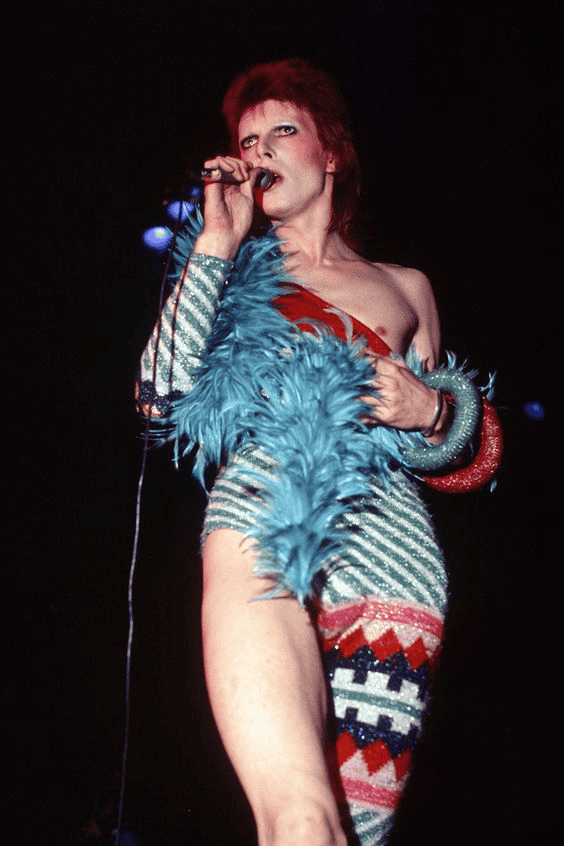
Credits: @marieclaireuk / Pinterest
David Bowie’s chameleonic ability to reinvent himself kept him at the forefront of music and fashion. His album “Let’s Dance” and its title track became iconic, showcasing his blend of rock and new wave influences.
Def Leppard
Def Leppard’s blend of heavy metal and glam rock produced some of the most memorable anthems of the 1980s, including “Pour Some Sugar on Me” and “Love Bites.”
Public Enemy
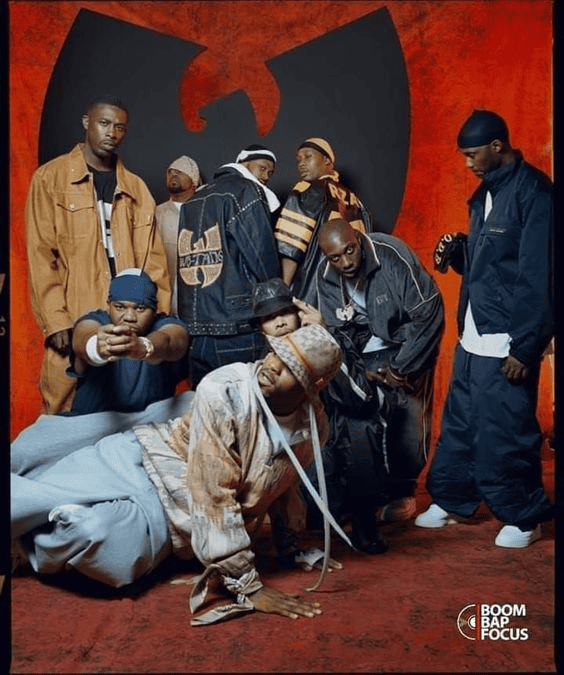
Credits: @jaydriguez / Pinterest
Public Enemy brought political awareness to the forefront of hip-hop with their powerful lyrics and dynamic performances.
Songs like “Fight the Power” and “Don’t Believe the Hype” became anthems for social change.
With their confrontational style and focus on social issues, Public Enemy not only transformed hip-hop but also brought attention to critical issues affecting the African American community.
Boy George and Culture Club
Boy George gained fame with Culture Club, known for their new wave music blending soul, pop, and reggae.
Hits like “Karma Chameleon” and “Do You Really Want to Hurt Me” became anthems of the era, with Boy George’s androgynous style making him a cultural icon.
Cyndi Lauper
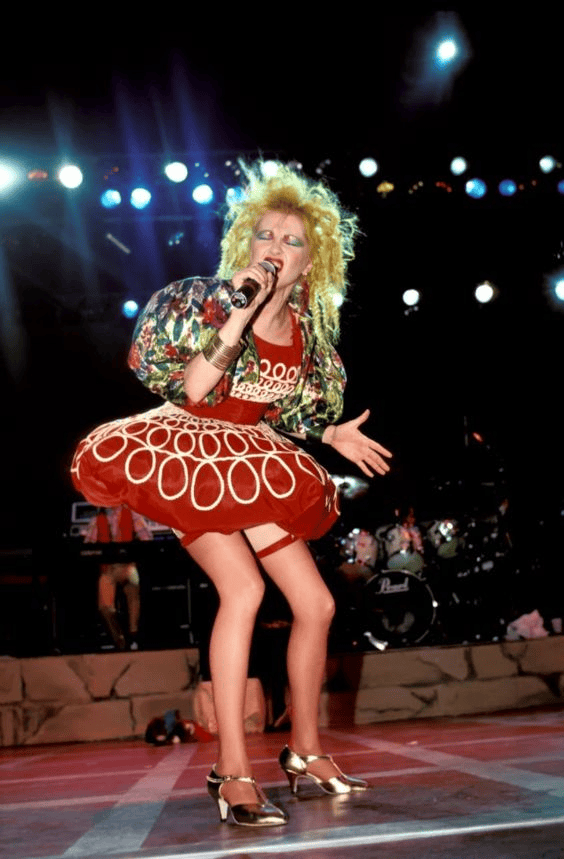
Credits: @vintageeveryday / Pinterest
Cyndi Lauper became a musical and fashion icon with her colorful style and pop hits, such as “Girls Just Want to Have Fun” and “Time After Time.”
Her work not only topped the charts but also influenced the era’s fashion trends.
Billy Idol
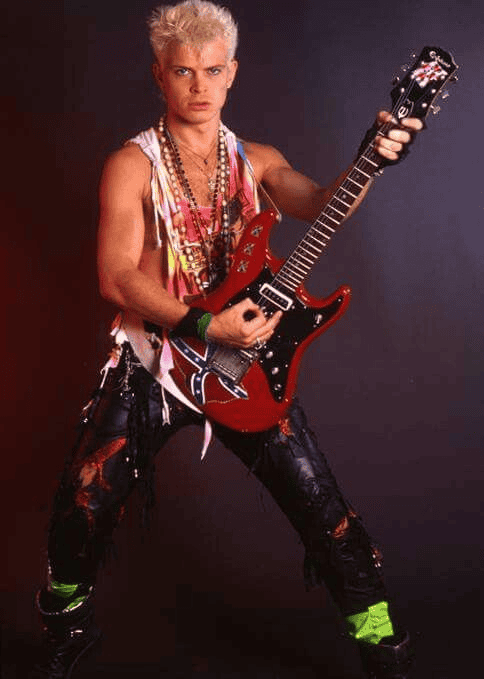
Credits: @michellemastora / Pinterest
Billy Idol’s punk rock aesthetic and rebellious attitude made him a standout artist of the 1980s. Songs like “White Wedding” and “Rebel Yell” defined
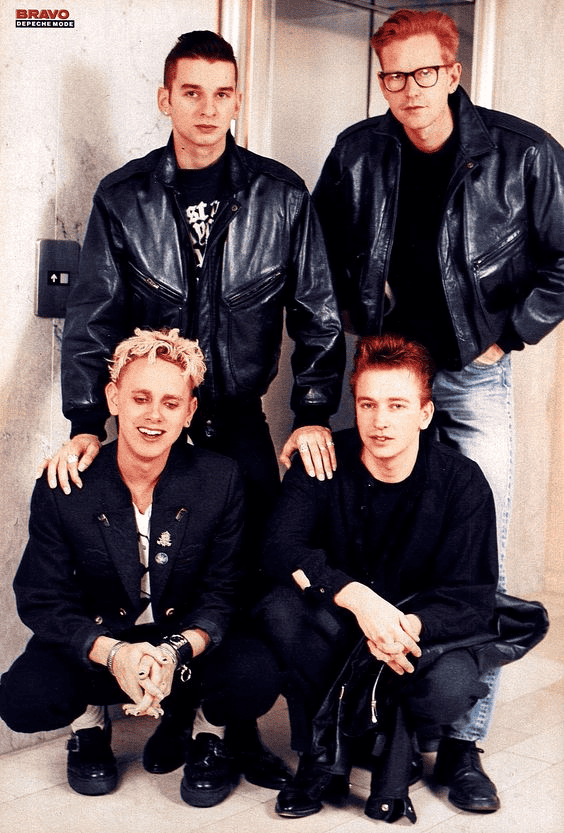
Credits: @vdemcuk66 / Pinterest
Depeche Mode’s dark, synth-heavy sound set them apart from other bands of the decade. Hits like “Enjoy the Silence” and “Personal Jesus” have left a lasting impact on electronic music.
MC Hammer
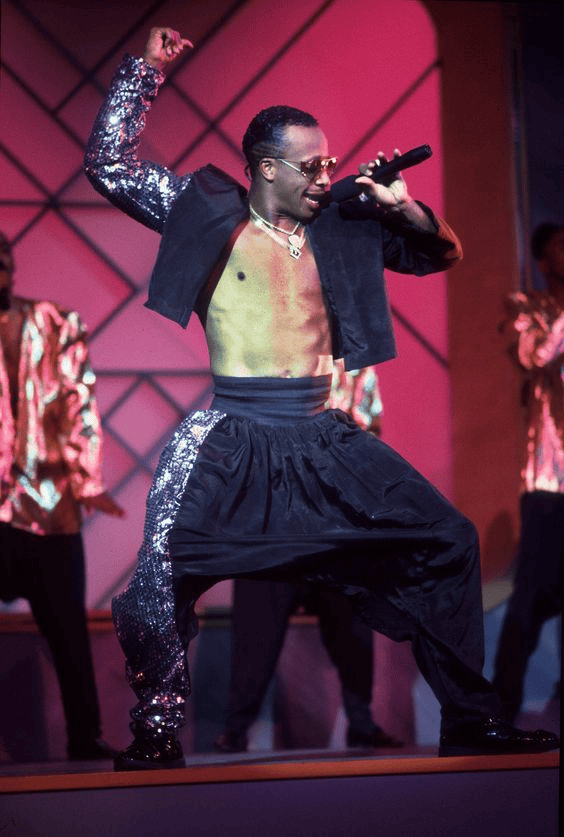
Credits: @veteranowned / Pinterest
MC Hammer was known for his catchy hooks and flashy dance moves. Hits like “U Can’t Touch This” made him a pop culture phenomenon and helped bring hip-hop into the mainstream.
Guns N’ Roses
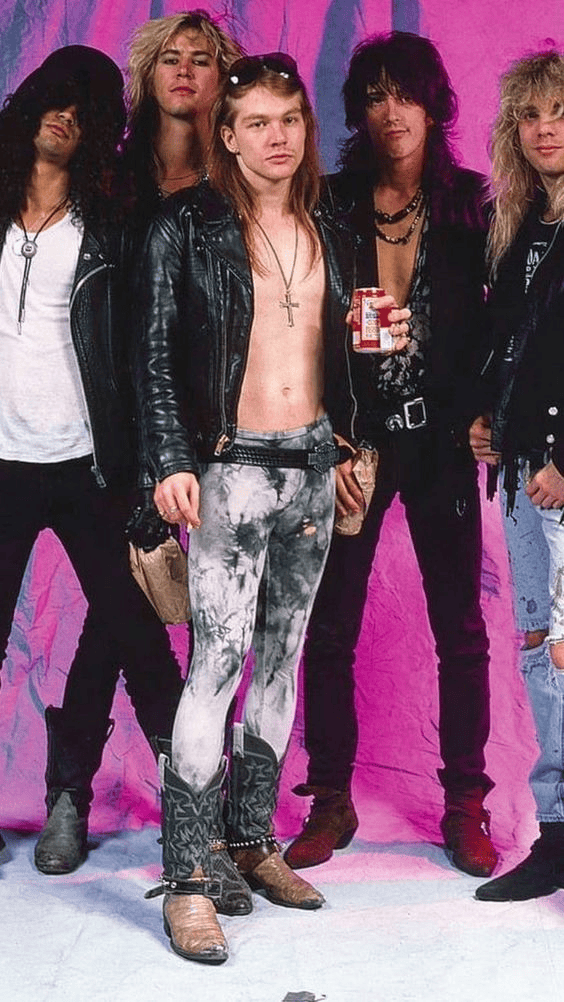
Credits: @carmenlaurapop0583 / Pinterest
Guns N’ Roses’ hard rock sound and rebellious image made them one of the most iconic bands of the 1980s.
Their debut album “Appetite for Destruction” includes classics like “Sweet Child o’ Mine” and “Welcome to the Jungle.”
Music Videos and Television
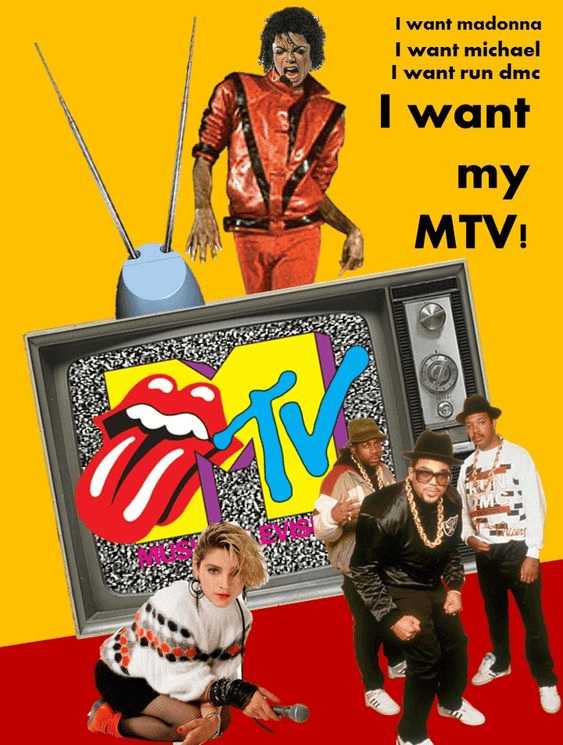
Credits: @leatherface10 / Pinterest
Music Videos
The 1980s marked a significant transformation in music consumption, largely due to the rise of music videos.
These short films or videos that accompanied songs became essential platforms for artists to showcase their musical talents and artistic vision.
Michael Jackson’s “Thriller” set a new benchmark with its cinematic quality, choreography, and storytelling.
Icons like Madonna, with her provocative and visually stunning videos for hits like “Like a Prayer,” pushed the boundaries of creativity and performance art.
Music videos became a platform for artists to establish their image, connect with audiences, and leave a lasting visual impression.
Music Television
The birth of MTV on August 1, 1981, marked a watershed moment in music history.
It not only changed how music was marketed but also how it was consumed by the public.
MTV (short for Music Television) was the first channel to play music videos around the clock, giving artists unprecedented exposure and changing the dynamics of the music industry.
Artists whose videos featured innovative storytelling and unique visual styles could gain international fame overnight.
Popular TV Shows

Credits: @iiwiix2 / Pinterest
Television in the 1980s also saw a blend of new genres and storytelling techniques that reflected the cultural and social dynamics of the time.
Shows like “Miami Vice” brought a new level of esthetic and narrative style to the crime drama genre, incorporating contemporary fashion and music into its episodes.
Similarly, “Family Ties” reflected the social and political dynamics of the era.
Starring Michael J. Fox as the conservative Alex P. Keaton, the show humorously explored the generational clash between the liberal parents and their Reagan-era Republican son.
Its relatable family dynamics and sharp wit made it a beloved sitcom of the decade.
The Brat Pack and Breakfast Club
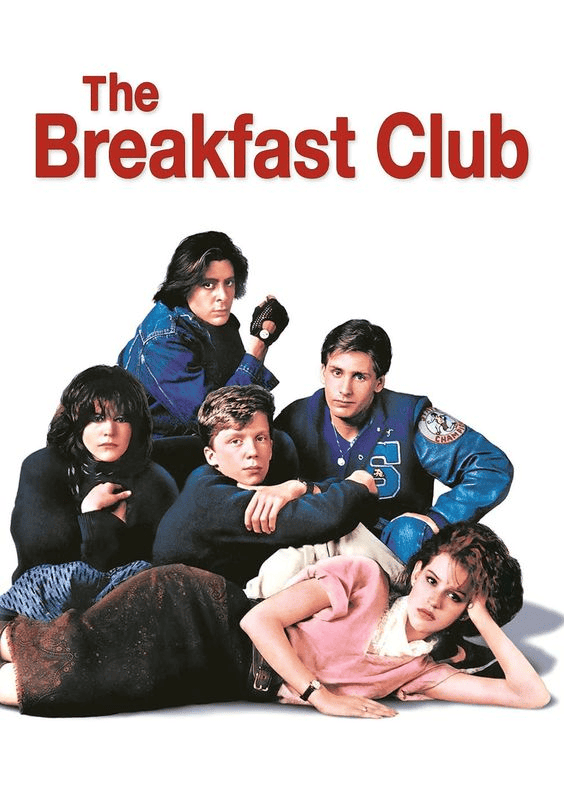
Credits: @marieclaire / Pinterest
The 1980s also gave rise to a group of young actors known collectively as the Brat Pack.
Films like “The Breakfast Club” and “St. Elmo’s Fire,” which featured members of this group, became cultural landmarks.
These films explored themes of adolescence and coming-of-age, resonating deeply with teenagers and young adults.
The Brat Pack’s influence extended beyond cinema, as they became symbols of youth and rebellion in the 1980s.
The integration of music videos and television during the 1980s not only entertained but also shaped public perceptions and influenced global culture.
This era set the groundwork for the multimedia approaches to music and entertainment that are prevalent today.
Pop Culture and Fashion
Pop Culture Phenomena
The 1980s were a golden age for pop culture, marked by an explosion of trends, icons, and phenomena that left an enduring impact on society.
The decade saw the rise of blockbuster movies, iconic television shows, and an influx of new music genres.
The influence of pop culture was omnipresent, from the music videos that dominated MTV to the fashion statements that became everyday wear.
The phenomenon of celebrity culture was magnified, with stars like Michael Jackson, Madonna, and Princess Diana becoming household names and influencing everything from music to fashion.
Fashion Trends
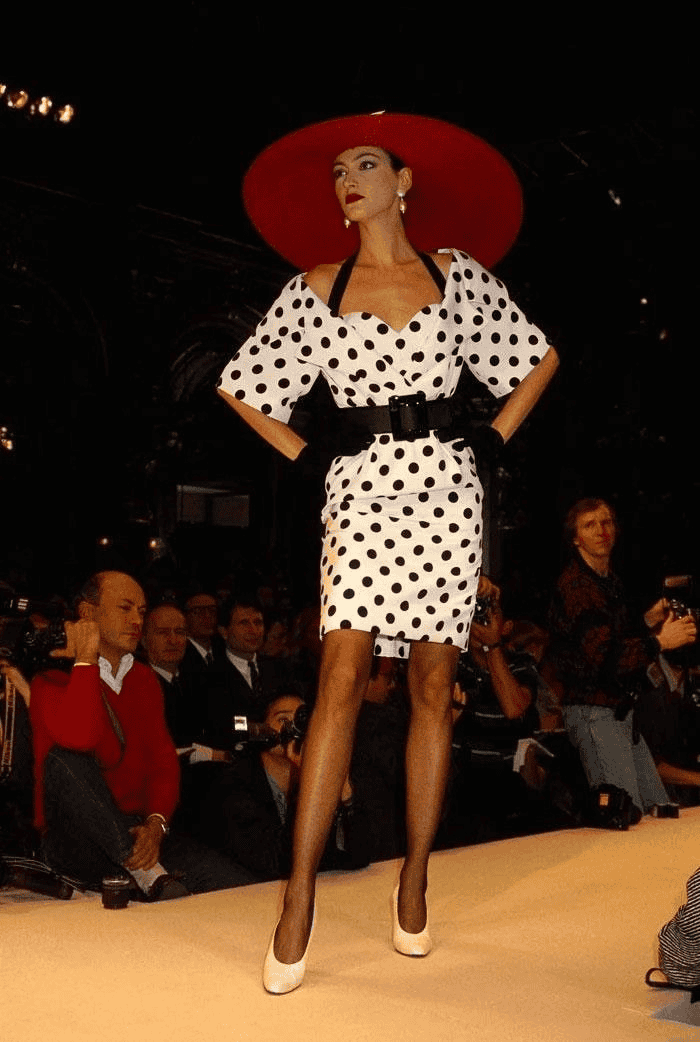
Credits: @thatt_girll1/ Pinterest
Fashion in the 1980s was bold, extravagant, and unapologetically vibrant.
Shoulder pads became a defining feature, adding a sense of power and structure to women’s fashion.
This trend was part of the broader “power dressing” movement, where clothing was used to project confidence and authority, particularly in the workplace.
Big hair was another hallmark of the era, with voluminous styles achieved through teasing, perms, and plenty of hairspray.
Bright colors and neon hues were ubiquitous, reflecting the decade’s exuberant and energetic spirit.
These trends were not just confined to high fashion but permeated everyday wear, making the streets a canvas of vibrant and eclectic styles.
Iconic Fashion Items

Credits: @simarc / Pinterest
Several fashion items from the 1980s have achieved iconic status and remain influential today.
Leg warmers, a symbol of the dance-inspired fitness craze, became a fashion staple, thanks in part to movies like Flashdance.
Leather jackets and high-waisted jeans were popularized by both punk and pop scenes, with artists like Boy George and Madonna leading the trend.
Polo shirts, often associated with preppy style, were versatile pieces that transitioned from sportswear to everyday fashion.
Rise of Power Dressing
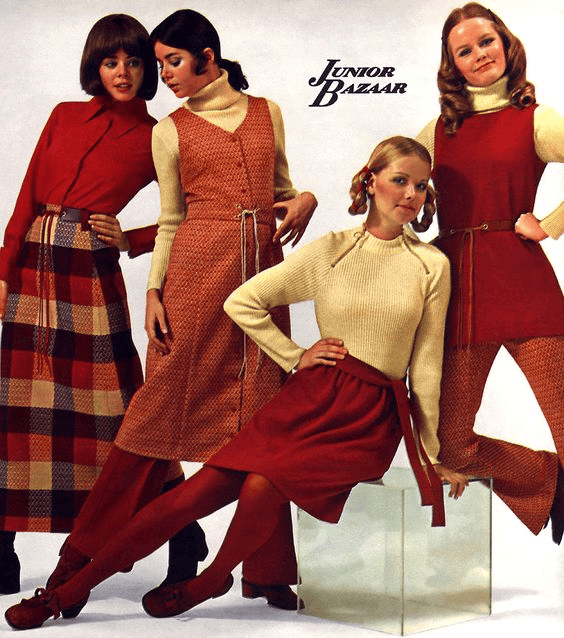
Credits: @babsyjo/ Pinterest
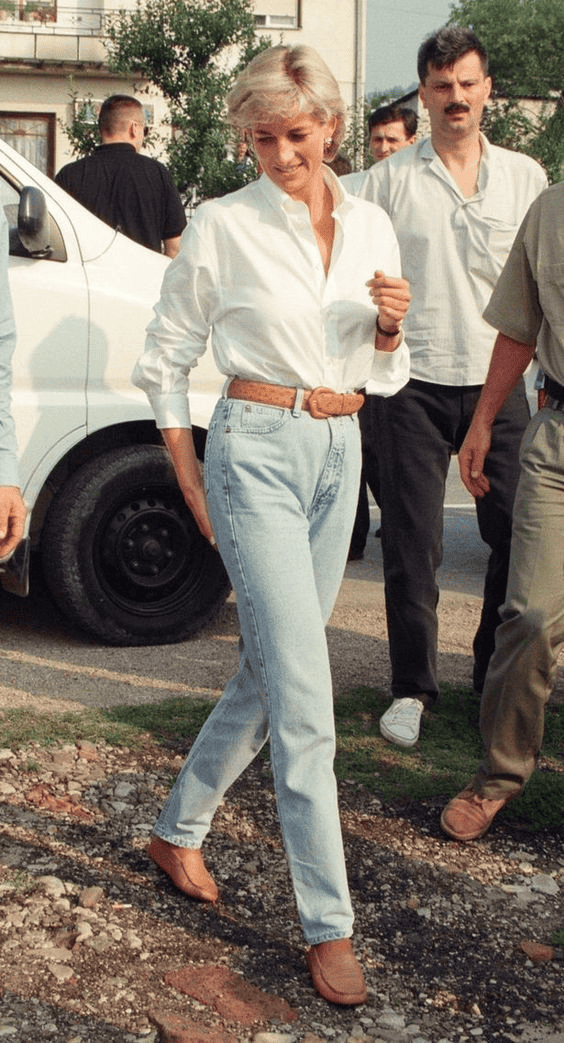
Credits: @deborahelainew / Pinterest
The concept of power dressing emerged strongly in the 1980s, characterized by padded shoulders and tailored outfits.
This style reflected the growing number of women in professional and executive roles, aiming to project authority and competence in the workplace.
Designers like Thierry Mugler and Christian Lacroix were instrumental in defining the bold, assertive lines of 80s power dressing.
The rise of power dressing not only influenced fashion but also signaled broader social changes as women increasingly entered leadership roles in business and politics.
Movies and Entertainment
Blockbuster Movies
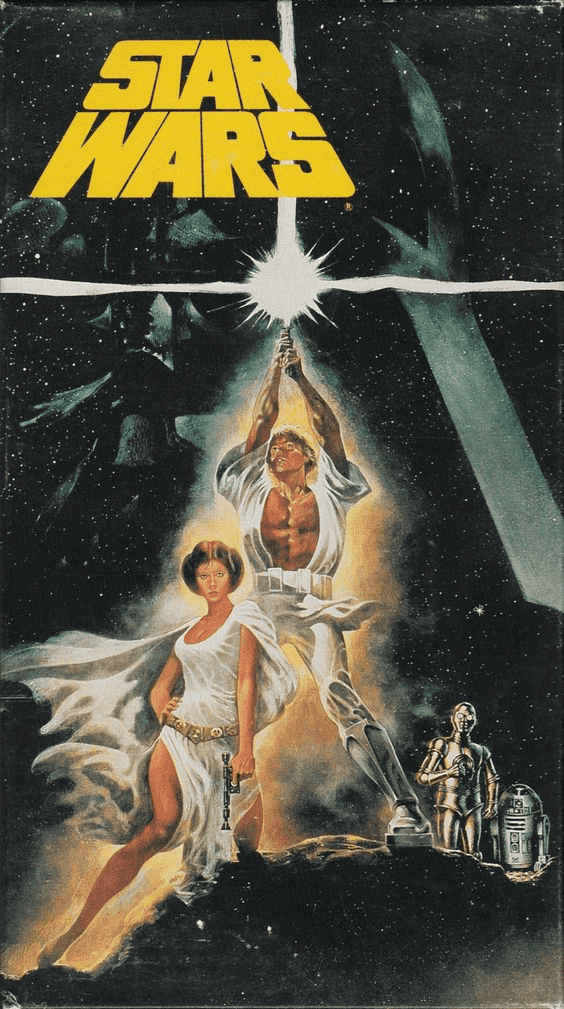
Credits: @imgur/ Pinterest
The 1980s were dominated by blockbuster movies that became cultural landmarks.
“Star Wars” and its sequels, including “The Empire Strikes Back,” revolutionized the sci-fi genre with groundbreaking special effects and epic storytelling.
The “Indiana Jones” series, starring Harrison Ford, offered thrilling adventures and became a cornerstone of action cinema.
Iconic Movies
Iconic films like “The Breakfast Club” and “Fast Times at Ridgemont High” deeply resonated with the youth, providing a raw and relatable portrayal of teenage life.
These films tackled themes of adolescence and identity, becoming iconic for their honest depiction of the complexities of growing up.
Their influence is evident in the way they shaped the teen movie genre, making them enduring classics.
Video Games
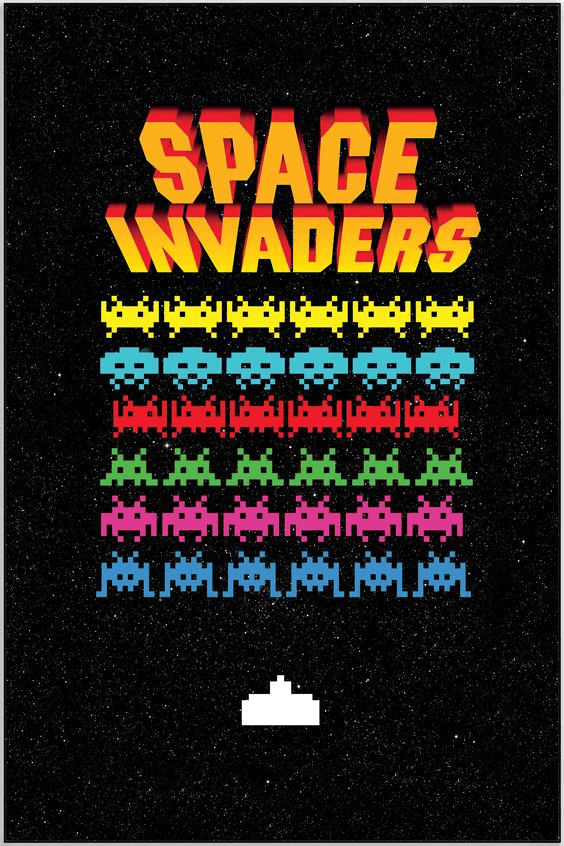
Credits: @Admendk/ Pinterest
The 1980s also marked significant advancements in the video game industry with the introduction of iconic games and systems like “Space Invaders,” “Donkey Kong,” and the Nintendo Entertainment System.
“Super Mario Bros.” in particular, revolutionized gaming with its innovative gameplay and design, establishing Nintendo as a dominant force in the industry.
These games not only provided entertainment but also paved the way for modern video gaming.
VHS Tapes
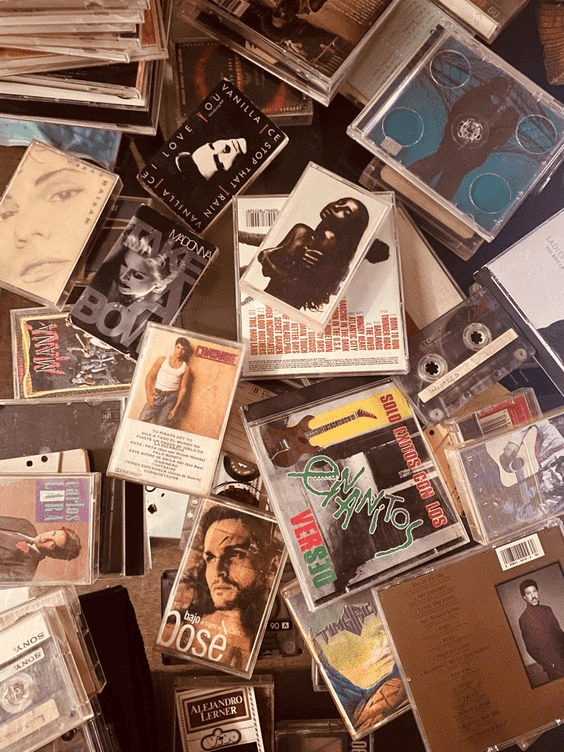
Credits: @nicolozano7/ Pinterest
The widespread adoption of VHS tapes during the 1980s changed the way people consumed movies.
For the first time, viewers had the convenience of watching movies at home, leading to the rise of video rental stores and significantly impacting the film distribution landscape.
This shift allowed for greater accessibility to films and played a crucial role in shaping the home entertainment industry.
Political and Historical Events
Ronald Reagan’s Presidency
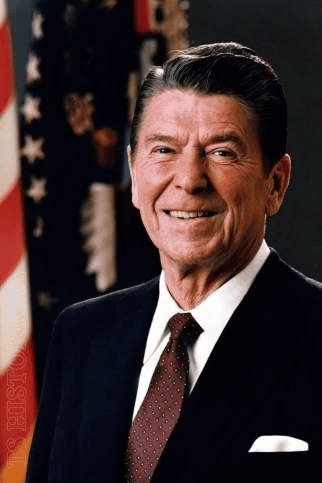
Credits: @tshistorical / Pinterest
Ronald Reagan’s presidency (1981-1989) was marked by significant economic policies and a strong stance against the Soviet Union.
Reagan’s “Reaganomics” aimed to reduce taxes and government spending, which he believed would stimulate economic growth.
His administration also saw a significant buildup of military power and an aggressive foreign policy stance, encapsulated by his famous demand, “Mr. Gorbachev, tear down this wall!”
Mikhail Gorbachev and the Soviet Union

Credits: @meganw3909 / Pinterest
Mikhail Gorbachev, the leader of the Soviet Union from 1985 to 1991, introduced major reforms that transformed the Soviet landscape.
His policies of glasnost (openness) and perestroika (restructuring) aimed to modernize the economy and make the government more transparent.
These reforms eventually reduced Cold War tensions and led to significant changes within the Soviet Union, setting the stage for its eventual dissolution.
The Fall of the Berlin Wall
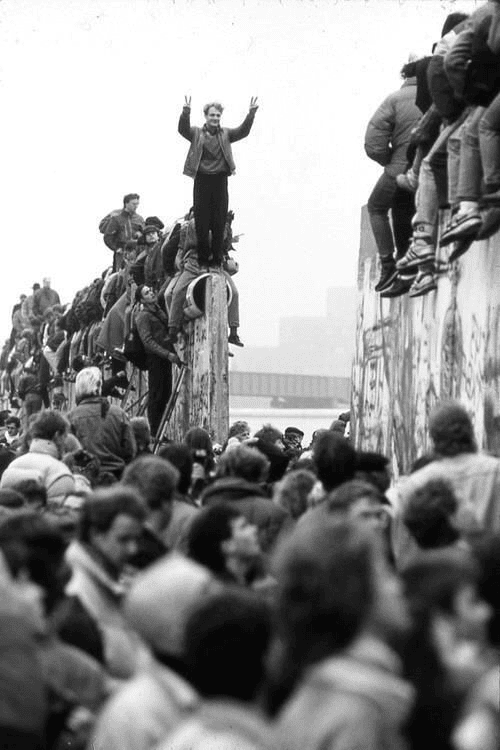
Credits: @lisayallamas / Pinterest
The fall of the Berlin Wall on November 9, 1989, symbolized the end of the Cold War and the beginning of the reunification of East and West Germany.
The Wall had been a stark representation of the division between the communist and capitalist worlds. Its collapse marked a victory for democracy and freedom, leading to significant political and social changes across Europe.
Tiananmen Square Protests
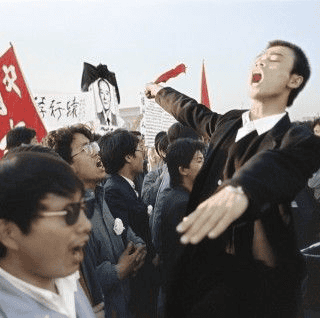
Credits: @thenewyorker / Pinterest
In 1989, the Tiananmen Square protests in Beijing saw thousands of students and citizens demanding political reform and greater freedoms.
The Chinese government responded with a brutal crackdown, culminating in the massacre on June 4, where hundreds, if not thousands, of protesters were killed.
The event drew international condemnation and remains a sensitive and heavily censored topic in China.
End of the Cold War
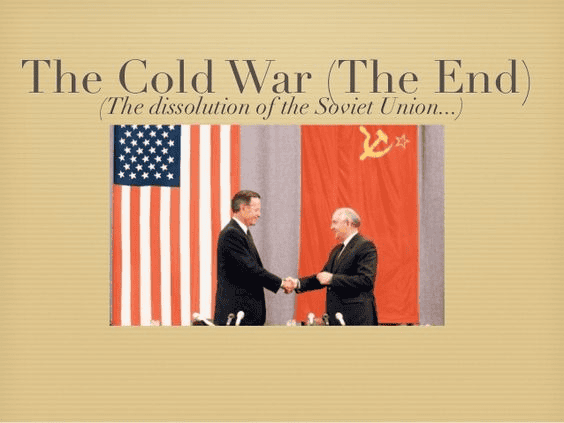
Credits: @Eboni_v / Pinterest
The end of the Cold War in the late 1980s and early 1990s marked the conclusion of decades of geopolitical tension between the United States and the Soviet Union.
A combination of diplomatic efforts, internal reforms in the Soviet Union, and increasing pressure for change led to a peaceful resolution.
The dissolution of the Soviet Union in 1991 officially ended the Cold War, leading to a new era of international relations and the emergence of the United States as the world’s sole superpower.
Social and Cultural Movements
New Wave Music
New wave music emerged in the late 1970s and became a dominant force in the 1980s.
Characterized by its eclectic mix of punk rock, pop, and electronic music, new wave brought a fresh, modern sound that was often accompanied by distinctive visual styles. Bands like Duran Duran, Depeche Mode, and The Cure led the movement, influencing both the music and fashion scenes.
The impact of new wave extended beyond music, shaping the aesthetics of the decade and inspiring future genres with its innovative use of synthesizers and emphasis on style.
Hip Hop
The 1980s witnessed the birth and rise of hip hop, a cultural movement that originated in the Bronx, New York.
Hip hop encompassed not just music but also dance (breakdancing), art (graffiti), and a distinctive style of dress.
Artists like Run-D.M.C., Public Enemy, and LL Cool J brought hip hop into the mainstream, addressing social and political issues through their lyrics and beats.
The genre’s influence was profound, giving a voice to marginalized communities and shaping the music industry for decades to come.
Heavy Metal and Glam Metal
Heavy metal and glam metal were defining sounds of the 1980s, characterized by loud, aggressive music and flamboyant, theatrical performances.
Bands like Metallica and Iron Maiden brought heavy metal to new heights with their intense sound and loyal fan bases.
Meanwhile, glam metal, with bands like Mötley Crüe and Poison, added a flashy, glamorous twist to the genre, incorporating elaborate costumes and makeup.
These subgenres not only defined the musical landscape of the decade but also influenced fashion and popular culture with their bold aesthetics.
Glam Rock and Its Legacy
Glam rock, which originated in the early 1970s, continued to leave its mark in the 1980s.
Pioneers like David Bowie and T. Rex had set the stage with their androgynous looks and theatrical performances. In the 1980s, glam rock’s influence could be seen in the extravagance and visual flair of artists across various genres, including pop and metal.
The legacy of glam rock lived on through its emphasis on performance art, which pushed the boundaries of gender norms and inspired future generations of musicians and fashion icons.
Technology and Innovations
Personal Computers

Credits: @Teiwazsol / Pinterest
The 1980s marked the beginning of the digital era with the advent of personal computers.
Companies like Apple and IBM revolutionized the way people worked and played by making computers accessible to the general public.
The Apple Macintosh, introduced in 1984, and IBM’s PC were among the most influential models, bringing computing power into homes and small businesses.
This technological advancement paved the way for the information age, transforming industries and everyday life.
Sony Walkman
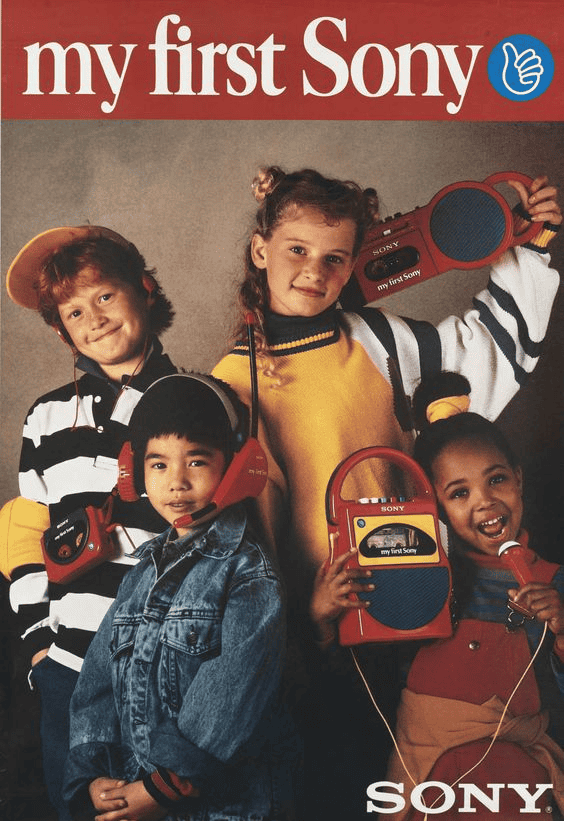
Credits: @floremipsum / Pinterest
The introduction of the Sony Walkman in 1979 revolutionized personal music consumption throughout the 1980s.
This portable cassette player allowed people to listen to their favorite music on the go, fostering a more personalized and mobile listening experience.
The Walkman’s popularity surged, becoming a cultural icon of the decade and laying the groundwork for future portable music devices, such as MP3 players and smartphones.
Cable Television
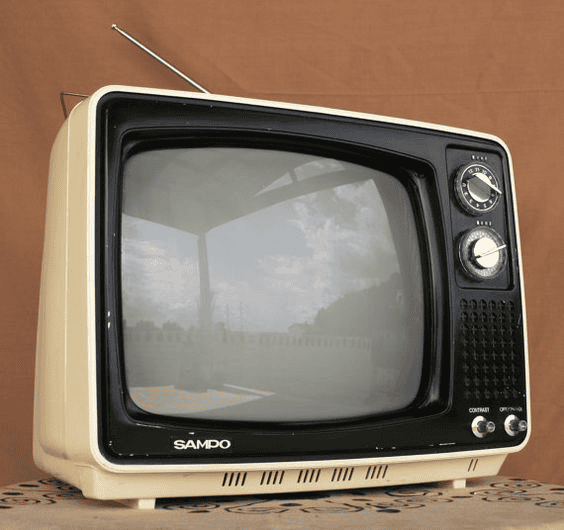
Credits: @artnau / Pinterest
Cable television expanded media consumption in the 1980s, offering viewers a wide variety of channels and programming options.
This innovation allowed for the rise of specialized networks like MTV, CNN, and HBO, each catering to different interests and demographics.
The availability of cable TV transformed the entertainment landscape, providing more diverse and niche content than traditional broadcast television.
This shift not only influenced viewing habits but also laid the foundation for the modern era of on-demand and streaming services.
The advent of cable also facilitated the widespread adoption of remote-control devices and videocassette recorders.
Notable Figures and Events
Princess Diana

Credits: @TheSunOnline / Pinterest
Princess Diana emerged as a global icon in the 1980s, captivating the world with her grace, compassion, and humanitarian efforts.
Her marriage to Prince Charles in 1981 was a highly publicized event, watched by millions.
Diana’s influence extended beyond her royal duties; she became known for her charity work and advocacy, particularly in areas such as HIV/AIDS awareness and landmine removal.
Her fashion sense also made her a style icon, leaving an enduring legacy that continues to inspire.
John Lennon
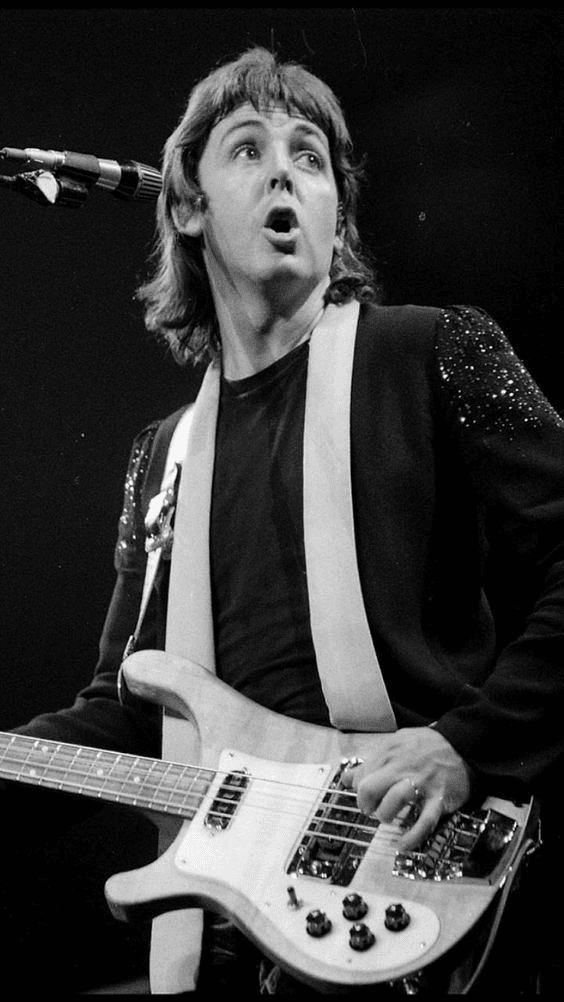
Credits: @tecamagno / Pinterest
The assassination of John Lennon in December 1980 shocked the world, cutting short the life of one of the most influential musicians of the 20th century
As a former member of The Beatles and a prolific solo artist, Lennon was a symbol of peace and love.
His assassination outside his New York City apartment ended a brilliant musical career and left a void in the hearts of millions.
Lennon’s death highlighted issues of gun violence and the impact of celebrity on personal safety, while his music and message of peace continued to resonate with future generations.
The Space Shuttle Challenger Disaster
The Space Shuttle Challenger disaster on January 28, 1986, was a significant event in American history.
The shuttle exploded 73 seconds after launch, killing all seven crew members, including Christa McAuliffe, who was set to be the first teacher in space.
This tragedy led to a reevaluation of NASA’s safety protocols and a pause in shuttle missions.
The Challenger disaster remains a somber reminder of the risks associated with space travel and the importance of rigorous safety measures.
The Chicago Bears’ Dominance
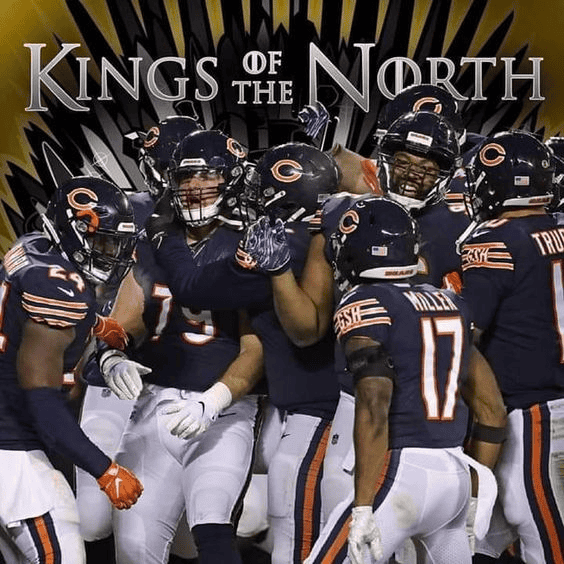
Credits: @GrizzlyRage72 / Pinterest
The Chicago Bears’ dominance in the mid-1980s, particularly their Super Bowl victory in January 1986, made them one of the most memorable teams in NFL history.
Led by coach Mike Ditka and featuring iconic players like Walter Payton and William “The Refrigerator” Perry, the Bears’ 1985 season is often cited as one of the greatest in football history.
Their success and larger-than-life personalities left a lasting impact on the sport and its fans.
The United States Olympic Committee and the 1980 Olympics
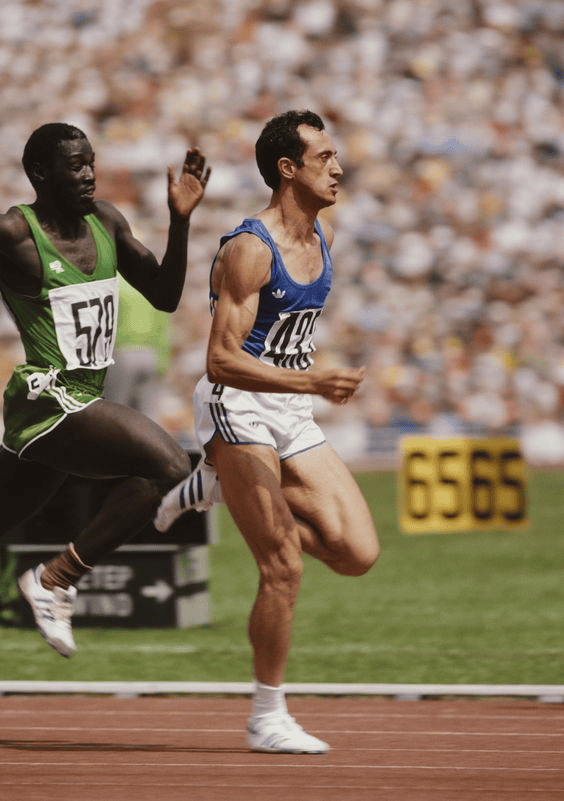
Credits: @riekajump / Pinterest
The United States Olympic Committee faced a significant challenge in 1980 when the U.S. government decided to boycott the Moscow Olympics in protest against the Soviet invasion of Afghanistan.
This boycott, supported by over 60 countries, underscored the intersection of sports and politics.
Despite the absence of many top athletes, the Games proceeded, highlighting the enduring spirit of the Olympics.
The boycott had long-lasting effects on international sports relations and the Olympic movement.
Cultural and Social Impact
Significant Impact on the Modern World
The 1980s had a profound impact on the modern world, shaping technology, culture, and politics.
The rise of personal computers, the advent of MTV, and the popularity of video games revolutionized entertainment and communication.
Social and political movements, such as the end of the Cold War, reshaped global dynamics, influencing today’s geopolitical landscape.
Emotional Connection to the Decade
For many, the 1980s evoke a strong sense of nostalgia and emotional connection.
The decade’s distinctive music, fashion, and cultural milestones created lasting memories.
Iconic events and figures, from Michael Jackson’s moonwalk to the fall of the Berlin Wall, left an indelible mark on those who lived through the era, fostering a deep sense of attachment to this vibrant period.
Major Impact on American History
The 1980s played a crucial role in American history, with significant political and economic shifts.
Ronald Reagan’s presidency, marked by conservative policies and a strong anti-communist stance, influenced the country’s direction.
Major events, such as the Challenger disaster and the Iran-Contra affair, also shaped public perception and policy.
The decade’s cultural phenomena, from blockbuster movies to emerging music genres, contributed to America’s cultural identity.
Cultural Movements Shaping Society
Cultural movements of the 1980s, including the rise of hip hop, new wave, and glam metal, significantly shaped society.
These movements not only transformed music but also influenced fashion, language, and social attitudes.
The era’s cultural innovations fostered greater diversity and creativity, leaving a legacy that continues to inspire and evolve.
Conclusion
The 1980s were a dynamic and transformative decade, characterized by significant advancements in technology, unforgettable cultural moments, and influential social movements.
From the rise of personal computers to the impact of blockbuster movies and iconic music, the ’80s left a lasting impression on the world.
The legacy of the 1980s endures in many aspects of contemporary life.
Its technological innovations laid the groundwork for the digital age, while its cultural contributions continue to influence music, fashion, and entertainment.
The political and social changes of the decade also helped shape the modern geopolitical landscape.
The 1980s continue to shape today’s culture in profound ways.
The era’s music and fashion trends are experiencing revivals, while its technological advancements set the stage for the digital revolution.
The social and cultural movements of the ’80s continue to resonate, reflecting the decade’s enduring influence on our world.
